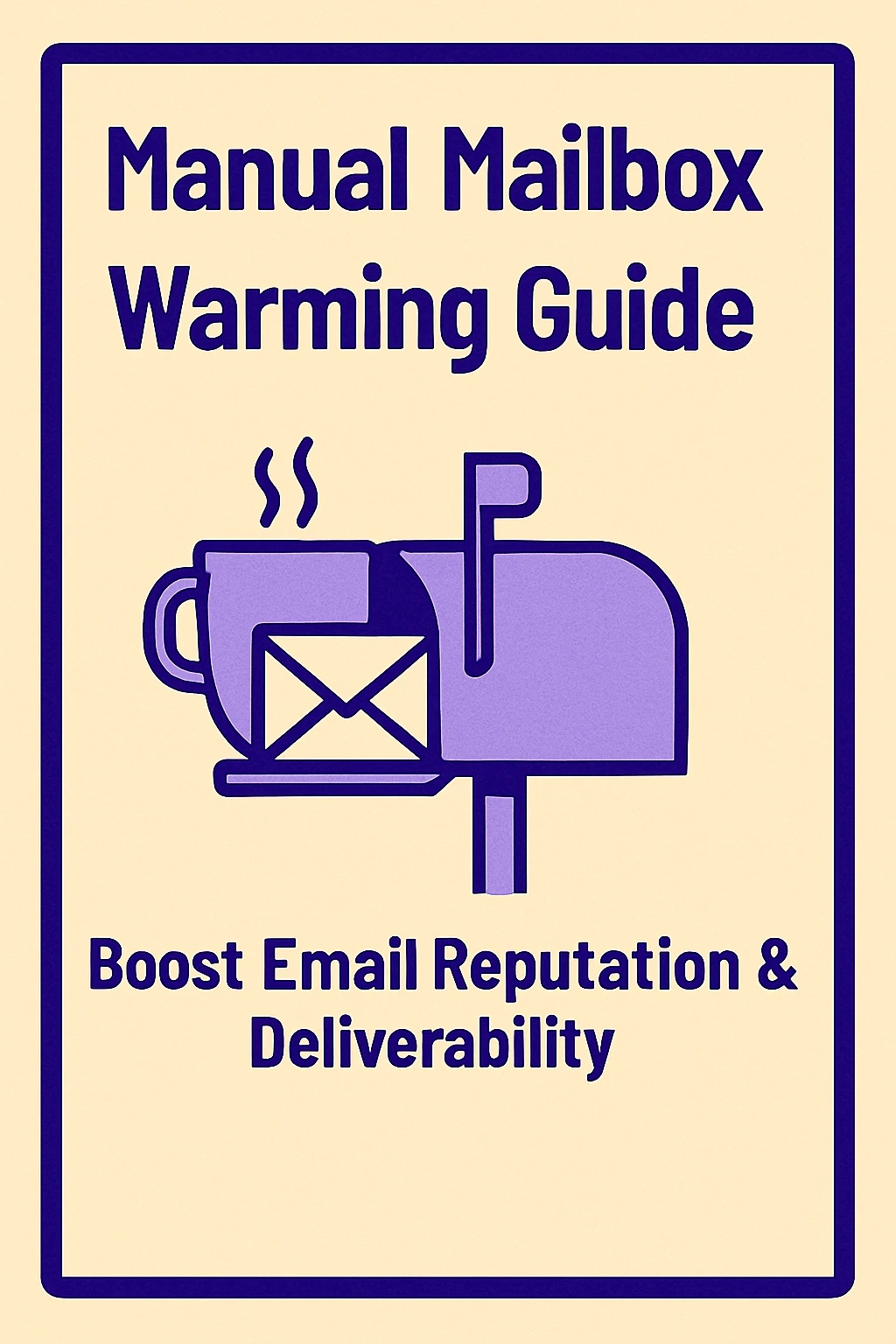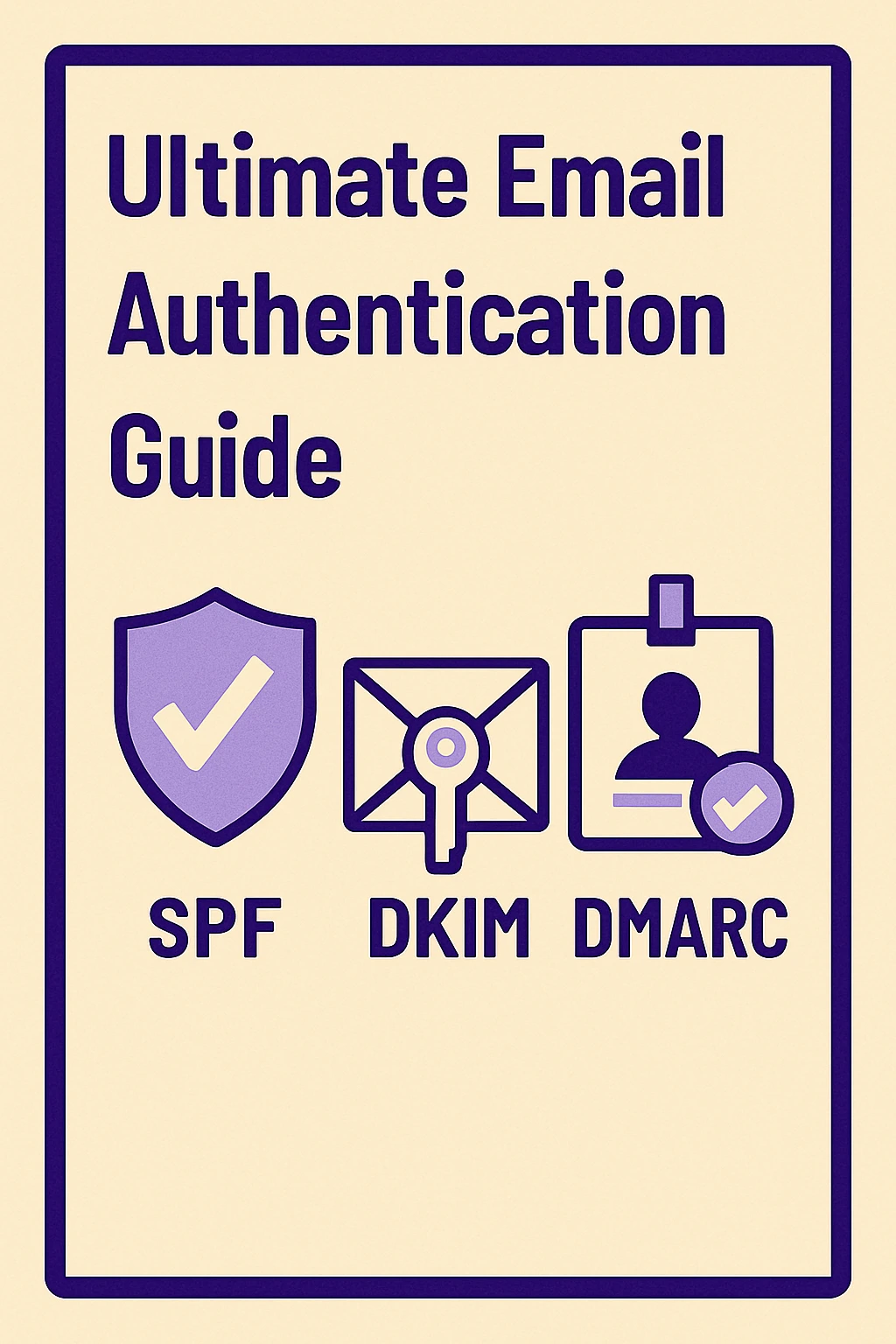Email Marketing Success with the Right Infrastructure
This comprehensive guide explores how email infrastructure tools play a critical role in mastering all four types of email marketing—promotional, transactional, behavioral, and newsletters. It covers real-world challenges marketers face with deliverability, speed, scale, and compliance, and shows how tools like MailKarma.ai, Mailreef, InfraForge, and Mission Inbox solve those problems. You’ll learn how to align infrastructure tools with your strategy, improve inbox placement, and build campaigns that convert—backed by performance, not guesswork. Whether you're a marketer or tech lead, this article will help you build a smarter, more reliable email system in 2025.

You can write the most compelling subject line. Craft the perfect body copy. Design a beautiful template. But if your email doesn’t land in the inbox, none of it matters. What ensures delivery, speed, and trust? Your infrastructure.
Email infrastructure tools keep your messages on track—no matter the email type. Whether it’s a weekend promo, a password reset, a behavioral nudge, or your monthly newsletter, the right setup behind the scenes is everything.
Let’s dive into the four types of email marketing and see how smart infrastructure makes them work.
Understanding the 4 Types of Email Marketing

1. Promotional Emails
Purpose and Examples
Promotional emails are built to drive action. A limited-time offer. A seasonal sale. A product launch. These emails try to catch attention quickly and nudge a click.
Challenges with Deliverability
Inbox providers are skeptical of anything that looks like a sales blast. If your domain isn’t warmed up or if you’ve had high bounce rates, those messages are likely to be flagged or blocked.
How Infrastructure Tools Help
Good infrastructure tools help you manage delivery in a smart way. They let you monitor engagement, spread out sends when needed, and improve your IP reputation. MailKarma.ai is one tool that helps protect and restore your sender trust.
2. Transactional Emails
Importance in User Experience
These are the functional emails—order confirmations, receipts, login alerts, password resets. People expect them, and they expect them fast.
Deliverability Standards
Delay a transactional email and your support inbox will feel it. Users trust these emails. Your system needs to deliver them within seconds, every time.
Using Infrastructure Tools for Speed & Reliability
Platforms like Mailreef are built specifically for this. They handle these high-priority messages without lag. A strong transactional email infrastructure also retries failed deliveries and maintains logs.
3. Behavioral/Triggered Emails
Based on User Actions
Triggered emails respond to behavior—like browsing a category, leaving something in the cart, or completing a signup. They're timely and relevant.
Role of Automation and Data Integration
These emails need data. Without the right integration between your site, CRM, and ESP, they won’t trigger correctly—or at all.
Infrastructure’s Role in Real-Time Execution
Good infrastructure helps trigger messages without delay. It processes queues instantly and sends emails the moment the condition is met.
4. Email Newsletters
Long-term Engagement & Retention
Newsletters keep your audience warm. Whether it’s weekly updates or monthly stories, these emails remind people that you’re here to add value.
Infrastructure Needs for High Volume Sends
Sending to thousands (or more) needs a system that can scale. If your infrastructure isn’t strong enough, delivery might be delayed—or worse, interrupted.
Optimizing Infrastructure for Inbox Placement
Infrastructure tools help maintain clean lists, manage volume properly, and report on bounce rates. They help you spot problems before they affect inbox placement.
Additional Considerations in Modern Email Marketing

Mobile-First Deliverability
More people read email on mobile devices than ever. Infrastructure must support responsive design delivery and test rendering across devices.
Handling Global Email Volume
If you're running campaigns across multiple regions, infrastructure tools should manage regional IPs, time-zone-based delivery, and language segmentation.
Feedback Loop Management
A good infrastructure setup collects and interprets feedback loop data from mailbox providers. This helps identify spam complaints and clean lists.
Why Infrastructure Tools Matter Across All Types
Deliverability Optimization
Without reliable delivery, even the best message can fail. Tools like MailKarma.ai give visibility into IP health, bounce patterns, engagement trends, and blacklist status.
Speed and Scalability
Whether sending to 100 or 100,000, your tools must keep up. Look for real-time queues, retry systems, and auto-throttling to manage volume.
Personalization at Scale
Tailored messages create better results. Infrastructure tools allow you to segment large lists and personalize without sacrificing speed.
Compliance and Privacy
You must meet rules like GDPR and CAN-SPAM. That means setting up SPF, DKIM, DMARC correctly—and respecting opt-outs. Good infrastructure tools help enforce these checks.
Best Email Infrastructure Tools for 2025
MailKarma.ai
MailKarma.ai helps marketers monitor and improve sender reputation in real time. It reveals inbox placement performance, domain trust, and blacklist status. The tool is ideal for staying compliant and landing more emails in the inbox. This platform gives you an inside view of your sender reputation. You’ll see what inbox providers think of you and where you're losing trust. MailKarma.ai helps fix those issues early.
Top Features:
- Real-time domain reputation monitoring
- IP warm-up recommendations
- Spam trap detection and blacklist checks
- Inbox placement diagnostics
- Engagement-based sender scoring
Need better inbox rates? MailKarma.ai helps protect and recover your email reputation.
Mailreef
Mailreef is built for speed. It’s great for time-sensitive emails like order confirmations or alerts. It also supports bulk sends for newsletters. Mailreef ensures fast delivery for critical emails like alerts and receipts. Its infrastructure is optimized for speed and scale, making it perfect for high-volume transactional and newsletter sends. Reliability and uptime are its core strengths.
Top Features:
- Lightning-fast transactional email delivery
- API-based integration for app-generated sends
- Queue failover and retry logic
- Scalable for peak traffic volumes
- Seamless support for newsletter campaigns
InfraForge
InfraForge supports flexible campaigns. Whether you're sending promotional, transactional, or triggered messages, this system adapts and scales with ease. InfraForge is a powerful infrastructure solution built for versatility. It supports complex email campaigns across different types and scales smoothly with growing demands. Its flexible API design fits seamlessly into modern marketing stacks.
Top Features:
- Unified architecture for all email types
- Built-in authentication tools (SPF, DKIM, DMARC)
- Flexible campaign scheduling and segmentation
- Real-time error monitoring
- Developer-friendly APIs and integrations
Mission Inbox
Mission Inbox helps you see exactly where your messages land. It also tests spam filters, recommends changes, and helps warm up new IPs. Mission Inbox gives you a clear view of inbox placement and deliverability barriers. It identifies spam triggers and recommends how to fix them before you send. Great for brands warming up new domains or managing complex sending paths.
Top Features:
- Inbox vs spam placement tracking across major ISPs
- Spam trigger analysis and filter prediction
- Automated warm-up plans for new IPs/domains
- Preview rendering for mobile and desktop
- Pre-send spam score testing
Building a Unified Strategy with the Right Infrastructure
Aligning Toolsets with Email Types
Each tool has its strength:
- Mailreef: for fast, reliable transactional delivery
- InfraForge: for all-around flexibility across email types
- MailKarma.ai: for deliverability diagnostics
- Mission Inbox: for inbox testing and placement checks
Monitoring & Optimization Framework
A central dashboard can track delivery performance, bounces, and engagement. Make data-backed decisions, test campaigns, and adjust before issues escalate.
Integrating Infrastructure with Marketing Platforms
Make sure your infrastructure tools connect with your ESP, CRM, and automation systems. This smooth integration keeps your entire email system stable.
Educating Your Team on Infrastructure
Even the best tools fail without proper usage. Train your team on best practices in infrastructure usage, reporting, and optimization.
Continuously Testing and Learning
Use A/B testing not just on subject lines but also on send times, infrastructure paths, and delivery windows to find the best combinations.
Conclusion: Infrastructure Is the Hidden Hero
Behind every opened email is an invisible network doing its job. Great infrastructure doesn’t just send—it delivers. And it does it fast, at scale, and with precision.
- MailKarma.ai gives you the power to monitor and improve deliverability.
- Mailreef handles mission-critical email timing.
- InfraForge gives your team flexibility across email types.
- Mission Inbox helps confirm your emails are reaching inboxes.
If your email strategy matters, your infrastructure should too. Don't wait for issues—book your free MailKarma.ai demo and keep your delivery strong with real-time insights.
FAQs
What are the 4 main types of email marketing?
Promotional, transactional, triggered (behavioral), and newsletters.
What’s the difference between promotional and transactional emails?
Promotional emails drive conversions. Transactional emails confirm actions like purchases or logins.
How do infrastructure tools help with deliverability?
They improve your domain reputation, track bounces, and monitor real-time delivery metrics.
What’s the best infrastructure tool for email automation?
InfraForge and Mailreef are strong choices. MailKarma.ai gives the monitoring support to keep everything running smoothly.
How do I improve inbox placement using infrastructure tools?
Use MailKarma.ai to monitor reputation and Mission Inbox to test delivery paths. These insights help you land in inboxes consistently.
Recent Blogs
FAQs: Everything You’re Wondering About Cold Email Deliverability & MailKarma’s Infrastructure
MailKarma is a dedicated email infrastructure solution built exclusively for cold email outreach. Unlike shared inbox tools or general ESPs, MailKarma gives you complete control over your sending setup—private US IPs, clean domains, and expert-backed deliverability practices. Built by cold email pros, MailKarma is optimized to scale outreach without landing in spam.
Because MailKarma sets up private infrastructure—including custom domains and mailboxes—it doesn’t offer a traditional free trial. However, you can explore the platform, view your dashboard, and test features before provisioning infrastructure. Our private dedicated email servers cost $150 per server plus $0.001 per email sent, making it extremely cost-effective for high-volume cold email campaigns. For Gmail Workspace solutions, pricing starts at $3.50 per email with a 10-email minimum, dropping to $2.50 per email for volumes over 100 emails. This transparent pricing model ensures you only pay for what you use while maintaining enterprise-grade email deliverability.
Yes. MailKarma automatically sets up SPF, DKIM, and DMARC records using best-in-class standards. No technical hassle—our system handles everything behind the scenes, and our support team is always ready to assist if needed.
Every MailKarma subscription includes:
- Automated DNS setup (SPF, DKIM, DMARC)
- Private mailbox hosting
- Ongoing deliverability optimization
- Server monitoring and uptime guarantees
It depends on your monthly sending volume and the number of contacts per sequence. To simplify this, MailKarma includes a volume-based calculator inside the app to help you choose the optimal setup for scale, safety, and inbox placement.
Gmail and Outlook aren't built for cold outreach—they throttle volume, rotate IPs, and limit deliverability. MailKarma gives you:
- Dedicated infrastructure
- Warmed IPs and aged domains
- No shared resources
- Built-in best practices for cold outreach
It's the infrastructure your outreach actually needs.

.png)



